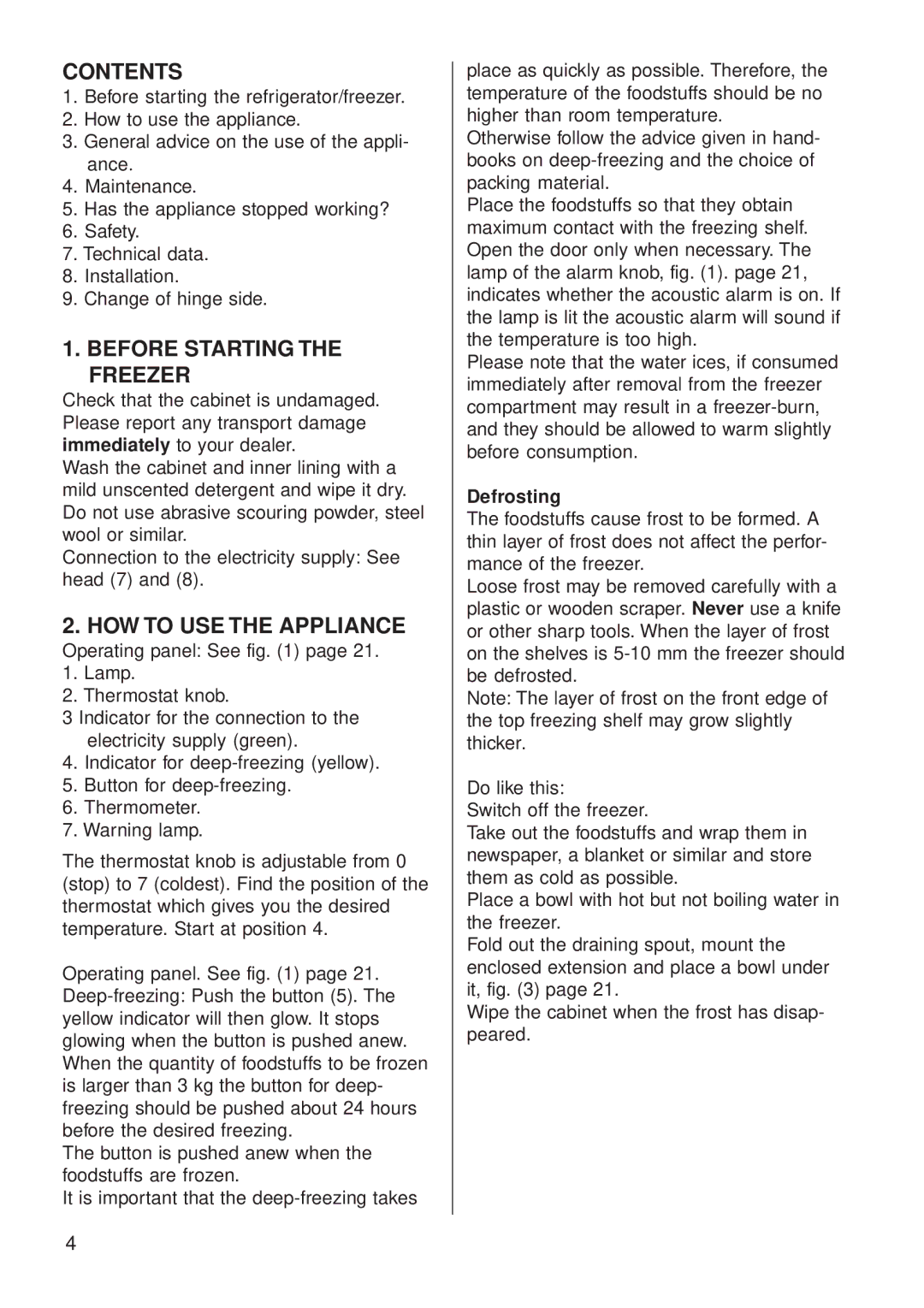CONTENTS
1.Before starting the refrigerator/freezer.
2.How to use the appliance.
3.General advice on the use of the appli- ance.
4.Maintenance.
5.Has the appliance stopped working?
6.Safety.
7.Technical data.
8.Installation.
9.Change of hinge side.
1. BEFORE STARTING THE FREEZER
Check that the cabinet is undamaged. Please report any transport damage immediately to your dealer.
Wash the cabinet and inner lining with a mild unscented detergent and wipe it dry. Do not use abrasive scouring powder, steel wool or similar.
Connection to the electricity supply: See head (7) and (8).
2. HOW TO USE THE APPLIANCE
Operating panel: See fig. (1) page 21.
1.Lamp.
2.Thermostat knob.
3 Indicator for the connection to the electricity supply (green).
4.Indicator for
5.Button for
6.Thermometer.
7.Warning lamp.
The thermostat knob is adjustable from 0 (stop) to 7 (coldest). Find the position of the thermostat which gives you the desired temperature. Start at position 4.
Operating panel. See fig. (1) page 21.
The button is pushed anew when the foodstuffs are frozen.
It is important that the
place as quickly as possible. Therefore, the temperature of the foodstuffs should be no higher than room temperature.
Otherwise follow the advice given in hand- books on
Place the foodstuffs so that they obtain maximum contact with the freezing shelf. Open the door only when necessary. The lamp of the alarm knob, fig. (1). page 21, indicates whether the acoustic alarm is on. If the lamp is lit the acoustic alarm will sound if the temperature is too high.
Please note that the water ices, if consumed immediately after removal from the freezer compartment may result in a
Defrosting
The foodstuffs cause frost to be formed. A thin layer of frost does not affect the perfor- mance of the freezer.
Loose frost may be removed carefully with a plastic or wooden scraper. Never use a knife or other sharp tools. When the layer of frost on the shelves is
Note: The layer of frost on the front edge of the top freezing shelf may grow slightly thicker.
Do like this:
Switch off the freezer.
Take out the foodstuffs and wrap them in newspaper, a blanket or similar and store them as cold as possible.
Place a bowl with hot but not boiling water in the freezer.
Fold out the draining spout, mount the enclosed extension and place a bowl under it, fig. (3) page 21.
Wipe the cabinet when the frost has disap- peared.
4
